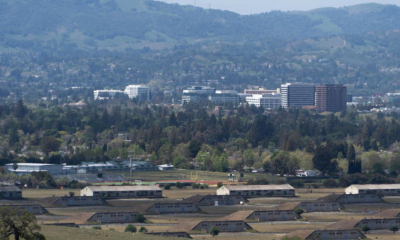San Francisco
California Gov. Gavin Newsom announced changes for San Quentin State Prison
San Francisco, California – San Quentin State Prison is a maximum-security prison for men located in San Quentin, California, north of San Francisco. It is the oldest prison in California and the only one that conducts executions. It also houses the largest death row for male inmates in the United States.
The prison was established in 1852 on a former Mexican land grant that was purchased by the state for $10,000. The first inmates were brought by ship from San Francisco and housed in a wooden building. The prison was named after Saint Quentin, the patron saint of prisoners.
Over the years, San Quentin has expanded and modernized its facilities and programs. It has been featured in many films, books, songs, and podcasts. It has also hosted concerts by famous musicians such as Johnny Cash and Metallica. Some of its notable inmates have included Charles Manson, Sirhan Sirhan, Scott Peterson, Richard Ramirez, and Stanley Tookie Williams.
Knowns as the home to the largest death row population in the United States, the prison will transform in near future under a new plan presented by the California Gov. Gavin Newsom on Friday. According to Newsom, the prison will be transformed into a lockup where less-dangerous prisoners will receive education, training and rehabilitation.
In a move towards reform and progress, the notorious San Quentin prison facility in California is set to undergo a major transformation. The facility is set to be reborn as the San Quentin Rehabilitation Center, marking a shift in focus towards prisoner rehabilitation and reformative justice.
The inmates currently serving time within the walls of San Quentin will be relocated to other penitentiary systems across the state. This decision comes as a result of a desire to provide a better quality of life and support for those who have been incarcerated, while also striving towards reducing recidivism rates.
State prison officials have revealed that out of the 668 prisoners facing the death penalty, a majority of them being male, almost 100 have already been moved from San Quentin. The aim of this restructuring is to provide a more humane and rehabilitative environment, with the hope of helping prisoners turn their lives around and successfully reintegrate back into society.
“Today, we take the next step in our pursuit of true rehabilitation, justice, and safer communities through this evidenced-backed investment, creating a new model for safety and justice — the California Model — that will lead the nation,” Newsom said in a statement Thursday about the coming changes.
California Governor Gavin Newsom, who has recently started his second term in office, is continuing his progressive stance towards criminal justice reform. In 2019, he announced a moratorium on executions and dismantled the gas chamber at the infamous San Quentin prison facility. He furthered his reforms in 2022 by announcing that some prisoners would be relocated to other institutions, signaling his commitment to creating a fairer and more effective criminal justice system.
San Quentin, the oldest prison in California, has housed some of the most notorious criminals in the nation’s history, including convicted murderers, serial killers, and even cult leader Charles Manson. It has also been the site of violent uprisings in the 1960s and 1970s, making its reputation as a prison notoriously difficult to shake.
Despite its troubled past, San Quentin has been home to some of the nation’s most innovative inmate programs, which have inspired reform efforts across the country. Governor Newsom’s office has taken inspiration from Norway’s approach to incarceration, which focuses on preparing prisoners for reintegration into society, and plans to implement similar programs in California.
This move towards a more humane and rehabilitative approach to criminal justice is in line with progressive efforts across the country, with states such as Oregon and North Dakota also taking cues from Scandinavian countries’ policies. Governor Newsom’s leadership with this decision shows commitment in this area to make some changes in the justice system in California.






















